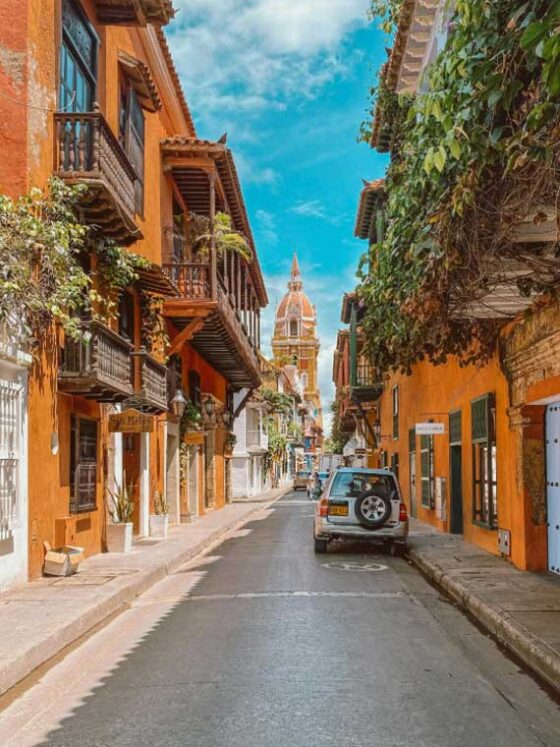Introduction to the Liturgical Colors of Holy Week:
Holy Week is the most sacred period of the Christian liturgical year, culminating in the celebration of Easter. During these days, the Church commemorates the final events of the life of Jesus Christ, from his triumphal entry into Jerusalem to his crucifixion and resurrection. The colors of the liturgical vestments worn by priests and deacons during the celebrations have a profound symbolic meaning, which helps the faithful to better understand the mystery being celebrated. In this article, we will explore the liturgical colors used during Holy Week, their significance, and how they contribute to the spiritual richness of this period.
Palm Sunday: The Red of Triumph and Passion
Palm Sunday opens Holy Week and commemorates Jesus’ triumphal entry into Jerusalem. On this occasion, the crowd welcomed him waving palm branches and shouting, “Hosanna to the Son of David!” The liturgical color of this Sunday is red, which symbolizes both the kingly triumph of Christ and his imminent passion and death. Red is the color of blood, sacrifice, and ardent love. It reminds us that Jesus’ love for us led him to offer his life for our salvation.
Red, therefore, is not only a color of joy and celebration, but also a presage of the pain and suffering that Jesus would endure in the days that followed. This contrast between triumph and passion is essential for understanding the depth of the Paschal mystery.
Holy Monday, Tuesday, and Wednesday: The Purple of Penitence and Waiting
The days following Palm Sunday, namely Holy Monday, Tuesday, and Wednesday, are days of reflection and preparation for Easter. The liturgical color used on these days is purple, which symbolizes penitence, conversion, and waiting. Purple invites us to examine our conscience, recognize our sins, and ask God for forgiveness. It is a time for prayer, fasting, and almsgiving, to prepare ourselves spiritually to celebrate the resurrection of Christ.
Purple is also a color of hope, because it reminds us that God’s forgiveness is always available to those who sincerely repent. During these days, the Church invites us to meditate on the Word of God, to imitate the example of Jesus, and to live in a manner more in accordance with the Gospel.
Holy Thursday: The White of the Eucharist and Service
Holy Thursday is a day of great importance, because it commemorates the Last Supper of Jesus with his disciples. During this supper, Jesus instituted the Eucharist, the sacrament of his Body and Blood, and gave his apostles the commandment to love one another as he had loved them. The liturgical color of Holy Thursday is white, which symbolizes purity, joy, and glory. White reminds us of the sanctity of the Eucharist and the real presence of Christ in the consecrated bread and wine.
Furthermore, Holy Thursday is also the day when Jesus washed the feet of his disciples, giving them an example of humility and service. This gesture invites us to imitate the example of Jesus, to serve our brothers and sisters with love, and to put the needs of others before our own. After the celebration of the Mass in Coena Domini, the altar is stripped, and the Blessed Sacrament is taken to a place of repose, where the faithful can adore it in silence.
Good Friday: The Red of Passion and Death
Good Friday is the day when the Church commemorates the passion and death of Jesus Christ on the cross. It is a day of mourning and penitence, in which the faithful are invited to fast, pray, and meditate on the suffering of Christ. The liturgical color of Good Friday is red, which symbolizes the blood shed by Jesus for our salvation. Red reminds us of the immense love of God for us, which led him to sacrifice his Son for our redemption.
During the celebration of Good Friday, the Church does not celebrate Mass but commemorates the death of Jesus through the liturgy of the Word, the adoration of the cross, and communion. It is a day of silence and contemplation, in which we are invited to unite ourselves to the suffering of Christ and to thank him for his sacrifice.
Holy Saturday: The Purple of Mourning and Silent Waiting
Holy Saturday is a day of transition between the death and resurrection of Jesus. It is a day of silence and waiting, in which the Church meditates on the descent of Jesus into hell and on his victory over death. The liturgical color of Holy Saturday is purple, which symbolizes mourning, penitence, and waiting. However, during the Easter Vigil, which is celebrated on the night between Holy Saturday and Easter Sunday, the liturgical color changes to white, to announce the resurrection of Christ.
Holy Saturday is a day to reflect on the meaning of Jesus’ death and on the hope of the resurrection. It is a time to renew our faith and to prepare ourselves to celebrate Easter with joy and gratitude.
Easter Sunday: The White of Resurrection and Eternal Life
Easter Sunday is the most important day of the Christian liturgical year, because it celebrates the resurrection of Jesus Christ from the dead. The resurrection of Jesus is the definitive proof of his divinity and the guarantee of our salvation. The liturgical color of Easter Sunday is white, which symbolizes purity, joy, glory, and eternal life. White reminds us that death has been defeated and that life has triumphed.
During the celebration of Easter, the Church sings the Alleluia with joy and proclaims the good news of the resurrection. The faithful are invited to participate in the paschal joy, to renew their baptismal promises, and to live a new life in Christ.
Conclusions: The Significance of Liturgical Colors in Holy Week
The colors of the liturgical vestments used during Holy Week are an important element of the Christian liturgy, which helps us to better understand the Paschal mystery. Each color has a profound symbolic meaning, which invites us to reflect, to pray, and to live in a manner more in accordance with the Gospel. Red reminds us of the triumph and passion of Christ, purple invites us to penitence and waiting, white symbolizes purity, joy, and glory. Through the understanding of liturgical colors, we can live Holy Week with greater awareness and participation, opening our hearts to the grace of God.
We HaftinaUSA.com offer a wide range of high-quality liturgical vestments, made with care and attention to detail. Our vestments are available in all liturgical colors and are suitable for all celebrations. Visit our website to discover our collection and find the perfect vestment for you. https://haftinausa.com/collections/liturgical-vestments
*This post is part of a paid collaboration. The content was created in partnership with the brand.







